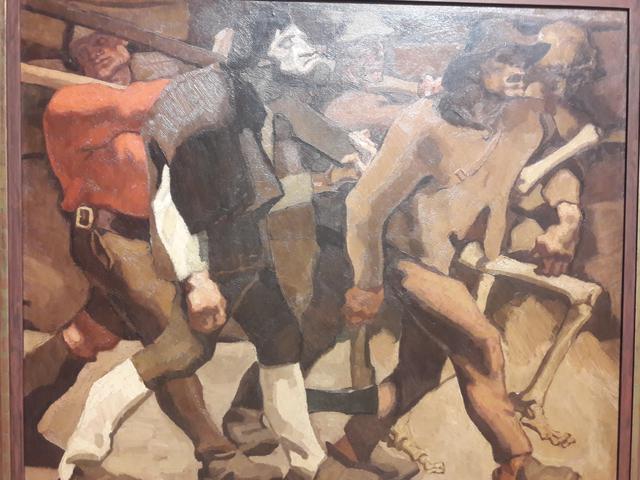dance of death from anno nine

Albin Egger-Lienz, the renowned Austrian painter, is best known for his captivating works that showcase his special preference for rustic genre and historical paintings. One of his most notable pieces is the "Dance of Death from Anno Nine," a masterpiece that exemplifies his ability to distill formal language into monumental expressiveness. Born in Dölsach-Stribach near Lienz, Egger-Lienz's artistic journey began under the guidance of his father, a church painter, before he further honed his skills at the Munich Academy. Influenced by the likes of Franz Defregger and Jean-François Millet, he eventually made his mark in Vienna, where his talent flourished.
In 1911 and 1912, Egger-Lienz took on the role of a professor at the Weimar Grand Ducal Saxon Art School in Weimar, showcasing his expertise and passion for the arts. His dedication to his craft was further demonstrated during the First World War when he served as a war painter, capturing the essence of the tumultuous times through his art. Despite being offered a professorship at the Vienna Academy in 1918, Egger-Lienz chose to settle in South Tyrol, where he continued to create awe-inspiring works that left a lasting impact on the art world.
The "Dance of Death from Anno Nine" stands as a testament to Egger-Lienz's artistic prowess, showcasing his ability to evoke emotion and tell a compelling story through his paintings. This particular piece is a striking representation of the medieval allegory of the Dance of Death, a theme that has been explored by various artists throughout history. Through his unique interpretation, Egger-Lienz brings a fresh perspective to this timeless subject, infusing it with his own distinctive style and vision.
As visitors explore the vibrant city of Vienna, they have the opportunity to immerse themselves in the rich artistic legacy left behind by masters like Albin Egger-Lienz. The "Dance of Death from Anno Nine" serves as a captivating glimpse into the artist's creative genius, inviting viewers to delve into the intricate details and profound symbolism woven into the fabric of the painting. With each brushstroke, Egger-Lienz invites us to ponder the mysteries of life and death, offering a poignant reflection on the human experience that transcends time and space.
© ChatGPT 3.5